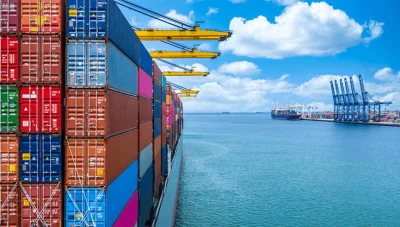Dynamic adaptation
In fleet management as in life, nothing remains static forever. Companies introduce revised policies, authorities enforce new maritime regulations, and operational procedures undergo continual review. It becomes crucial to consistently and effectively implement such changes across all vessels within a fleet, and the way you approach it can significantly impact your company’s success.
Ensuring fleet-wide compliance
Implementing change at fleet level can be a real challenge. Fleet operations are vast and complex, and there is rarely time to sit all stakeholders down and explain in detail how minor changes to policies and procedures must be adopted and followed. Ensuring that detailed policies are understood and properly, consistently acted upon is never easy, especially when they may only apply in specific circumstances or to certain types of vessels. The requirements can be highly situational and easily forgotten.
Communicating any change effectively is a basic requirement if it is to be fully implemented where necessary. The information can be dictated in memos or emails, but it is essential that efficient follow-up is possible. The details must be followed, monitored, and enforced in situ. This requires a framework that supports the enforcement of new policies, in a way that they are easy for crews to understand. At the same time, there should be effective oversight and accountability.
Let’s take an example where the company changes its safety policy to take greater consideration of weather conditions. Container vessels, for instance, often have lower threshold for high winds than tankers, due to the risk of containers falling off vessels or being damaged by high winds. A company could set a policy stating that container vessels cannot sail in winds exceeding a certain strength. This policy could vary depending on the size of the vessel, where it is sailing and how laden the vessel is. The precise conditions of how this policy should be followed are quite specific; data on weather conditions, navigational parameters, the vessel’s laden level and shoreside compliance would need to be considered before decisions are made.
Without an efficient framework in place, it can be difficult to ensure that this policy is understood and followed correctly and consistently. As a result, the policy may not be followed as intended, creating a risk of safety guidelines being breached.
Communicating changes in policies and procedures
The same applies to ensuring that every vessel in a fleet operates in compliance with today’s complex and ever-changing maritime regulations. New restrictions, local rules and requirements, port authority conditions, and vessel or cargo-specific decisions need to be effectively communicated, monitored, and followed-up on. Navigating the regulatory seascape is hard enough; ensuring that the means for compliance are clearly communicated and noted is even more so. Here again, the key to ensuring that the entire fleet is at all times aware of what is needed and where, is a smart communications framework

Being able to react and respond to change rapidly and uniformly can define a company’s competence. In the fast-paced, rapidly digitising world of maritime, agility is king. Fragmented, nebulous information creates difficulties, and outdated workflows that rely on disparate data and processes are simply not up to scratch. To remain safe, operate efficiently and meet targets, crews and leaders aboard need to know exactly what is required and when, and what actions are needed to comply with requirements. Whether the change relates to an amended company policy, revised operating requirements, or the imposition of new regulations, the information has to be quickly available to all stakeholders.
One of the biggest challenges for shipping companies is embedding compliance requirements in day-to-day operations in such a way that they are easily understood and followed. Monitoring and oversight are also necessary if you want to be sure that the entire fleet is singing in tune.
The intelligent communications framework
Handling the multiple tasks involved in accessing the information, transmitting it to all who need to know, and then validating that it is being acted on, can turn the most competent fleet management team’s hair grey. This need not be the case as digital solutions provides the means to communicate and enforce change methodically.
Dynamic, integrated workflows can provide an efficient means and methodology communicating and enforcing policies, regulations and information. OneOcean’s integrated platform, which is used aboard allows bridge leaders to plan voyages while taking policies and regulations into account. It’s web-based, shore-side counterpart, FleetManager allows shoreside teams to monitor fleets, gain situational awareness and communicate and enforce specific and broad-ranging company policies. A shared interface and shared access to the same data means everyone is on the same page, working from the same information.
The fleet’s operational efficiency is improved through automated communication, visualisation and real-time updates. Any deviations from approved plans or policies, can be quickly and easily identified, thereby allowing a rapid response to be put in place. The increased visibility provided to shoreside teams enables personnel to monitor, advise and support fleet operations, including compliance.
Furthermore, OneOcean’s integrated portfolio of smart solutions enables shoreside teams and onboard crews to clearly know what actions are, and are not permissible depending on the circumsrtances. Consolidated guidance can easily communicated with all the details in one place.
Change is inevitable. It is also necessary that it is properly implemented. If your fleet is to operate in accordance with changes to the company’s policies and the myriad of maritime regulations, communicating this information effectively requires the best possible framework. Modern technology delivers this capability.

